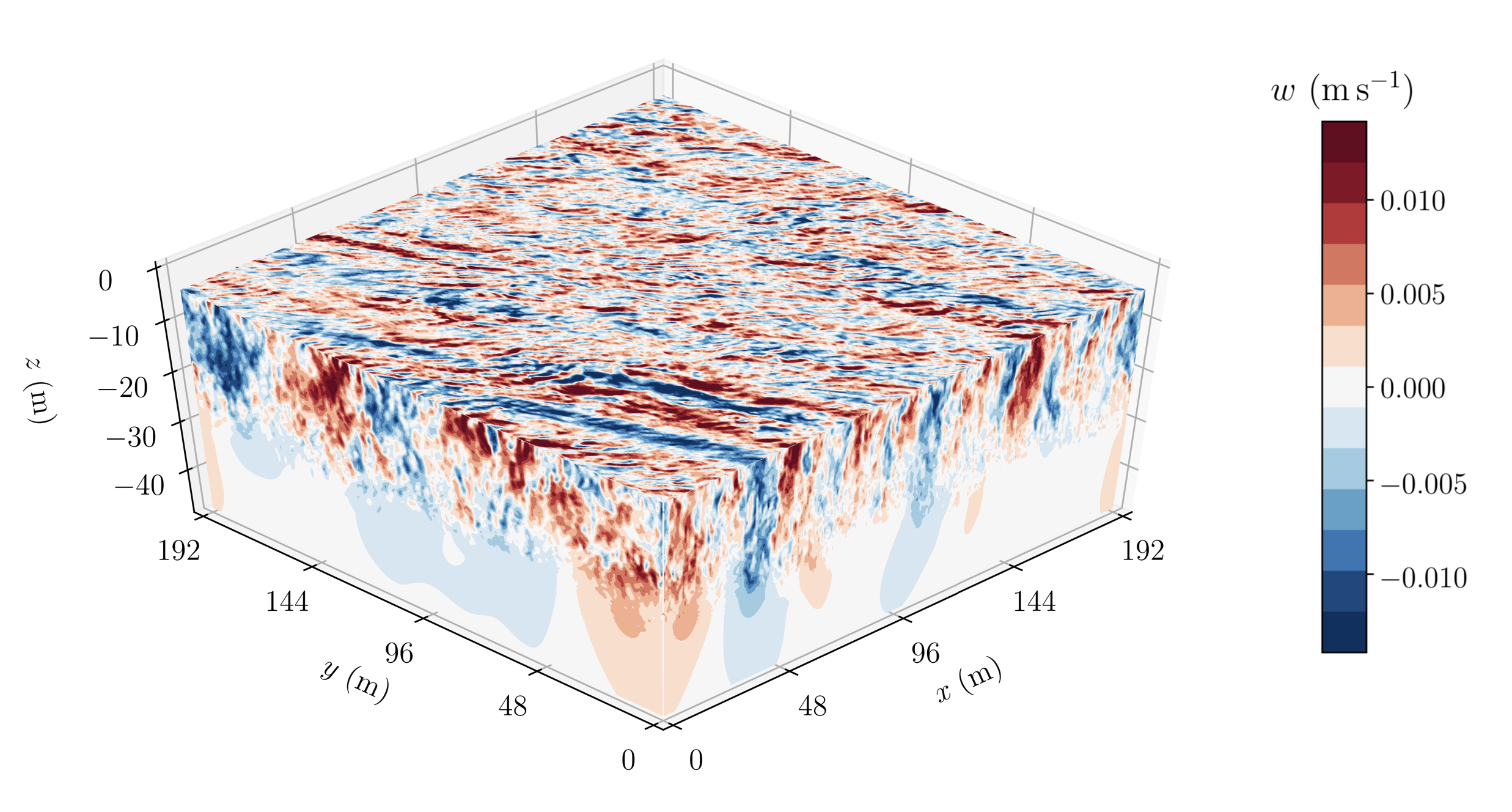A few things I work on
Have questions about my work? Email me at
gregory.leclaire.wagner@gmail.com.
See my github for real-time updates on my software projects.
Turbulent ocean mixing
I develop models for vertical turbulent mixing in the ocean surface boundary layer (at scales between 1 and 100 meters), and for horizontal mixing by ocean mesoscale eddies (at scales from 10-200 kilometers). My work is focused on developing models that use as much physics as possible, but nevertheless leverage powerful, modern data-driven techniques for parameter estimation and uncertainty quantification. As part of my parameterization work, I develop ParameterEstimocean.jl, a software package for estimating free parameters, and part of a data-driven framework for inventing and improving approximate models for turublent fluxes in Earth’s ocean. This work is part of the CliMa project.
Oceananigans.jl
I’m one of the core developers of CliMa’s ocean component, Oceananigans.jl. Oceananigans.jl is fast and friendly software for problems ranging from idealized classroom-ready tutorials, to high-resolution large eddy simulations in simple or complex domains, to realistic planetary-scale ocean general circulation simulations.

Oceananigans.jl is open source, written in the Julia programming language and runs on CPUs and GPUs. I’ve helped develop Oceananigans’ ground-breaking user interface and the sustainable, extensible design of its internals.
Surface gravity waves and wave-turbulence interactions
Frothing, whitecapping, undulating surface waves are the top of the ocean surface boundary layer. I work both on the theory of surface wave forcing and momentum transfer between the atmosphere and ocean, and on interactions between surface waves and boundary layer turbulence.
The image below depicts turbulence simulated by Oceananigans.jl. The image shows the turbulent vertical velocity field that develops following the growth of a surface wave field with a wave length of one hundred meters over four hours.

Information about how to produce this image can be found on github, or in this paper.
I’ve also co-written a paper on a common source of confusion in studies on ocean transport: how to interpret general circulation model output when that model does not depend explicitly on the ocean surface gravity wave field.

